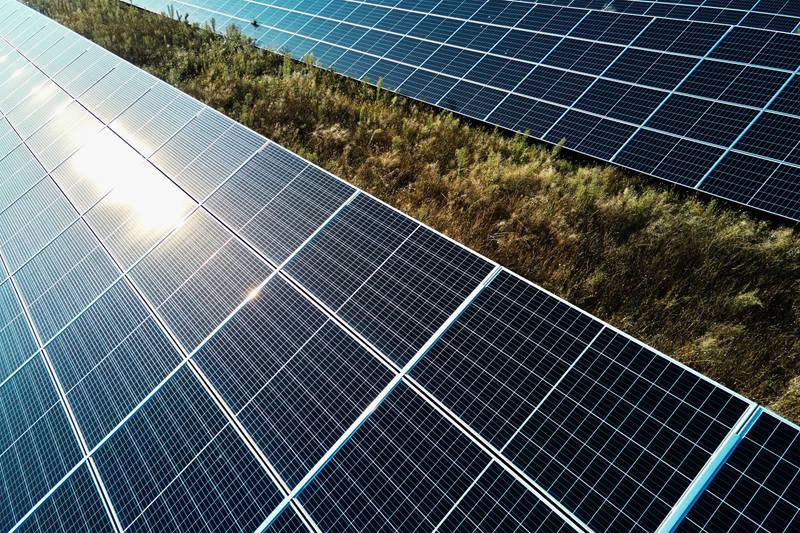In recent summers, there have been several instances where electricity prices dropped below zero and forced producers to actually pay to sell electricity to the market. This has led many solar panel owners to ask: Is my solar park even worth it under such conditions? .
Short answer: Yes, it still pays off – but you need to look at the big picture.
1. The profitability of a solar park does not solely depend on exchange prices
First, it’s important to highlight that negative prices are rare. They usually last for only a short time – just a few hours a day, and only under specific weather and market conditions. For the rest of the time, the solar park still produces electricity with a positive market price that can be used on site or sold to the network.
Negative prices only affect a portion of electricity that is sold to the network. If you consume the electricity produced by your panels yourself, you still benefit as a producer. Every kilowatt-hour you produce and use locally means saving on purchasing. More on this in the next section.
2. The key lies in consuming your own production
While selling electricity to the network generally brings income, the most profitable approach, from the payout period perspective, is to use all generated energy on site. The reason is simple. When you consume electricity from the network, you not only pay for the electricity itself but also for:
- network charge,
- excise duty,
- renewable energy charge,
- VAT.
You can significantly increase profitability by saving on these additional costs alone. Unlike the fluctuating electricity price, these extra fees are generally stable but tend to increase over time. For example, over the past five years, network charges have increased by an average of 7% annually.
That means, self-generated electricity still saves on cost even if exchange prices are temporarily in decline.
3. The investment pays off over time
Solar panels are a long-term investment. The average lifespan of a solar park is over 25 years. This means that for that entire period, the owner secures a significant portion of their electricity bills and saves money year-round.
In Estonia, the typical payout period for a solar park ranges from 7 to 12 years. This depends on the installation costs, panel efficiency and your consumption profile.
Even if you earn less from network sales during summer months or have minor losses during certain hours, the rest of the year (especially spring and autumn), combined with electricity consumed on site, compensates for it.
Example: How quickly does a solar park pay off?
Let’s take an average Estonian household with a 5 kW solar park. Here’s how the return might look:
| Indicator | Value |
| Installation cost (incl. inverter, labour, VAT) | ~6 000 € |
| Annual production | ~5 000 kWh |
| Cost saved on own consumption (0.18 €/kWh) | ~900 € per year |
| Revenue from surplus sold to the network (1,500 kWh, average 0.05 €/kWh) | ~75 € per year |
| Total annual financial benefit | ~975 € |
| Estimated payout period | ~6–7 years |
Even if 1/3 of the electricity is supplied into the network at a low price (or temporarily negative in the summer), the majority of the savings come from self-consumption, where the value is typically 2–3 times higher than the exchange price.
- If some electricity is sold at a negative price in the summer, the annual sales revenue, for example, might fall from €75 to €50.
- This has only a small impact on the overall return – the payout period is extended by just a few months at most.
- However, if you simultaneously increase your daytime electricity use or add a small battery, you might actually increase your profits, since the electricity consumed on site is the most valuable.
How to reduce the impact of negative prices?
- Timing your consumption – If possible, use electricity at your site when production is high and prices are low.
- Storage systems – Battery storage allows you to store energy and use it later when prices are higher. This allows you to sell cheap electricity to the network later at a higher price. Have a look at our storage systems here.
- Smart management – Smart solutions help you maximise self-consumption and reduce the amount of electricity sold to the network. Read more here.
In summary, a solar park still pays off even if electricity prices temporarily go negative during the summer. The overall return on investment should be viewed from a long-term perspective, taking into account your consumption habits and yearly energy price fluctuations.
Before installing panels, we recommend consulting a specialist who can assess how well the system matches your household profile. Contact us at teenindus@enefit.ee, call 777 4040 or leave a consultation request on our website. We’ll be happy to help.



